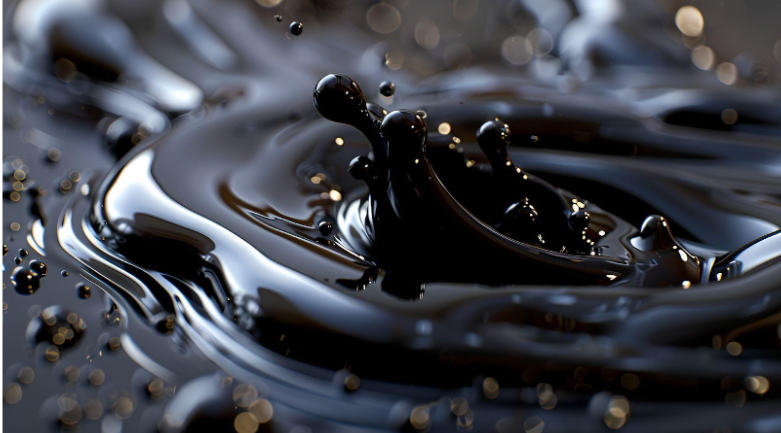What Is Tungsten Disulfide Lubricant And How It Can Be Synthesized?
Tungsten Disulfide is a solid lubricant that helps to reduce friction and wear between two surfaces moving in relative motion. It is a Transition Metal Dichalcogenide (TMD) and has a chemical formula of MX2, where M represents a transition metal like ‘Tungsten’ and X represents a chalcogen such as ‘Sulphur’. The chemical formula is WS2.
It has a lamellar crystal structure where the transition metal atoms are sandwiched between two layers of chalcogen atoms. Within the layers exist strong covalent bonds between the atoms and the layers are connected by weak Van der Waals forces.
When WS2 is used between two moving surfaces the layers separate out easily and attach to the surfaces parallel to the direction of motion. The low adhesion between the layers leads to low friction at the interface. The covalently bonded atoms within the layers can carry the load. This gives WS2 high load-bearing properties which help to reduce wear. Thus, by using Tungsten disulfide powder for lubrication you can reduce friction and wear on moving surfaces.
The lubrication mechanism using WS2 is due to its lamellar crystal structure. The layers slide over one another and act as a lubricating film. The low shear strength of the layers leads to a low coefficient of friction. WS2 shows good lubricating properties including a state of zero friction or super lubricity.
WS2 is thermally stable and resistant to oxidation therefore it can be used in applications that require high temperatures. At high temperatures, WS2 turns into Tungsten trioxide which also provides a low coefficient of friction. When it is heated in the absence of oxygen, it decomposes into Tungsten and Sulphur at 1250° C.
WS2 is found naturally as a mineral ore ‘Tungstenite’. It can be synthesized using processes like Chemical Vapor Deposition (CVD), Metal-Organic Chemical Vapor Deposition (MOCVD) and Atomic Layer Deposition (ALD).
Synthesis of Tungsten Disulfide
Chemical Vapor Deposition (CVD)
This is a simple method and can be used for large-area synthesizing. In this, metal oxide precursors and chalcogen are co-evaporated. They are made to react in the vapor form and form a stable layer on the substrate. The growth mechanism depends on factors like properties of the substrate, temperature and atomic gas flux.
The substrate’s surface energy can affect the nucleation and growth of WS2 films. Nucleation of WS2 on a smooth surface is not possible due to weak surface interactions. Therefore, direct nucleation is carried out on imperfect surfaces.
At high temperatures, surface diffusion occurs rapidly and therefore low temperatures are maintained to form an amorphous or polycrystalline film.
The growth of WS2 films depends on the atomic gas flux. High vapor pressure is required to provide an effective mix of atomic gases in the reactor chamber. It also helps to ensure that the atomic species are carried to the growth substrate.
For example, Hydrogen Sulfide (H2S) and Tungsten Hexachloride (WCl6) can be used as a source of W and S for WS2 growth. The temperature is maintained at 700° C. The growth mechanism is carried out in layer-by-layer mode and by varying the deposition time you can control the number of layers.
Metal-Organic Chemical Vapor Deposition (MOCVD)
This method is a subclass of conventional CVD and uses organic or metal-organic precursors as a source material for forming thin film deposition.
In this, the desired growth atoms are combined with other complex organic molecules and also carried to the substrate. They are decomposed by heat to get a thin film with high crystallinity. An atom-by-atom growth process is followed therefore the quality of growth of films can be engineered through variations in atomic compositions.
This process is preferred due to uniform large-scale growth, precise control of the metal and chalcogen precursors and the ability to control the composition and morphology of the grown substrate.
For example, Diethyl sulfide ((C2H5)2S) and tungsten hexacarbonyl (W(CO)6) can be used to get large-scale synthesis of WS2 at a temperature of 750° C.
Atomic Layer Deposition (ALD)
In this layer-by-layer gas phase chemical process is used to get atomically thin films. The precursors are delivered sequentially which leads to layer-by-layer growth mode. The reaction takes place at a comparatively lower substrate temperature. The number of layers can be controlled which leads to controlled growth of WS2. This method can be used for large-scale substrates.
For example, Hydrogen Sulphide (H2S) and Tungsten Hexafluoride (WF6) are used as sources of Sulphur and Tungsten. The ALD process involves the WF6 reaction with H2S to get layers of WS2. SiO2 is used as a substrate on which WS2 layers are deposited.




